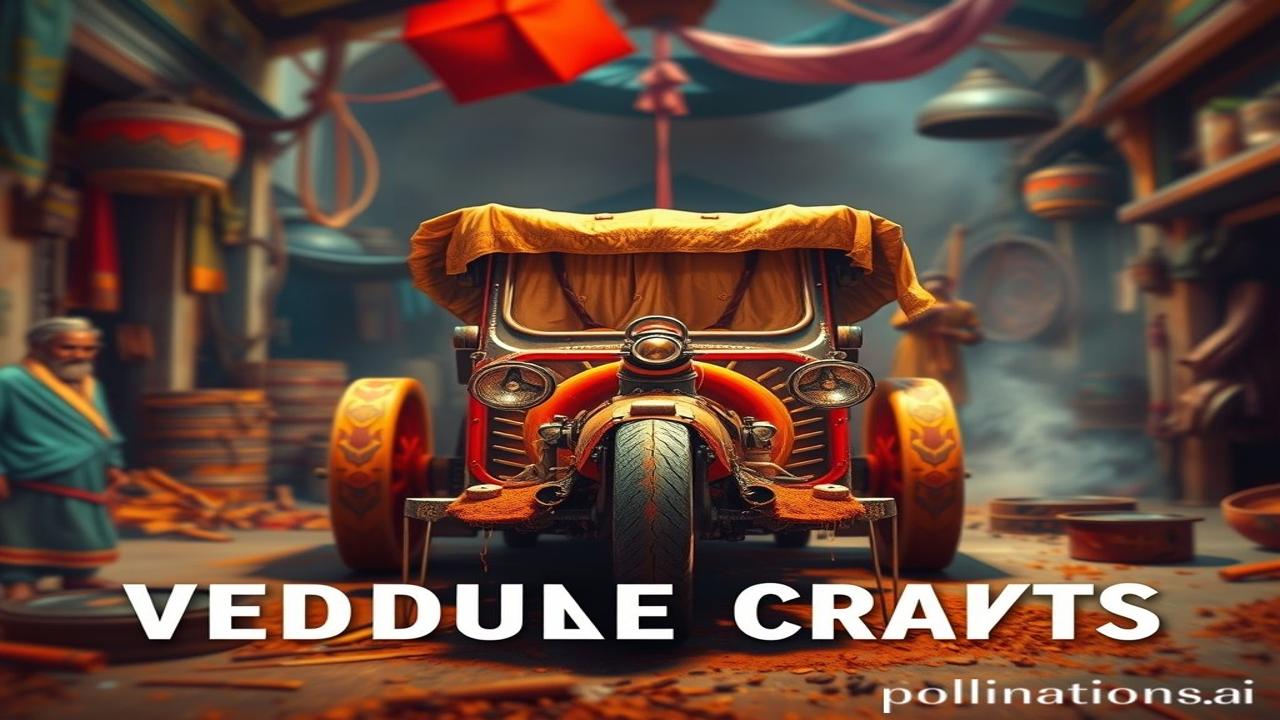मिट्टी की खुशबू और लकड़ी का संगीत: The Forgotten Art of Traditional Vehicle Making
Kabhi socha hai, jab hum highways par speed mein gaadi chalate hain, uss waqt kisi gaon ki dhool bhari gali mein, kisi buzurg ki hatheli se banaye gaye bail-gaadi ke chakke ki aawaaz aati hogi? Waqt ki dhool mein chhupi, yeh kahani hai Bharat ki paramparaagat vehicle making crafts ki. Ye sirf craft nahi hai, ye humari dharti se juda ek gehra ehsaas hai.
A Historical Journey: Wheels Through Time
Traditional vehicle making, dosto, koi aaj ka nahi hai. It’s been around for centuries! Think back to the Indus Valley Civilization. Humne tabhi se dekha hai ki log kisi na kisi tarah se transportation ke tareeke nikaalte aaye hain. Primarily, we’re talking about bullock carts (bail-gaadi), horse-drawn carriages (ghoda-gaadi), and even simpler hand-pulled carts (thela).
Yeh important isliye hai kyunki in vehicles ne humari history aur culture ko shape kiya hai. They facilitated trade, connected communities, and became an integral part of our rural landscape. Socho, Raja Maharaja apne rath par kaise shaahi andaaz mein aate the? Bail-gaadiyon par laad kar anaaj sheharon tak kaise pahunchta tha? Ye sab vehicles the, not just transportation. They were life!
Zamini Sach: Life Among the Artisans
Imagine yourself in a small village in Rajasthan. Dhup tez hai, aur hawa mein lakdi ki mehak. You see an old man, his face etched with the stories of a lifetime, chiseling away at a piece of wood. He is a sutradhar, a master craftsman.
“Beta,” he says, his voice raspy, “ye chakra sirf lakdi nahi hai. Ye humari parampara hai, humari pehchan hai.”
His hands, gnarled and strong, move with a practiced ease. He knows the wood like the back of his hand. He knows its grain, its strength, its potential. He’s learned from his father, who learned from his father. The knowledge has been passed down through generations.
Ma Rukmini, his wife, is busy too. She’s weaving colorful fabrics to decorate the bullock cart. The colours burst against the dusty backdrop, a vibrant symbol of hope and prosperity.
Their dream? To keep this art alive, to pass it on to their children, even though the world outside is changing rapidly. They are fighting to preserve their dharohar (heritage).
Dharohar Aur Pehchan: Echoes in Modern India
Aaj kal, hum cars aur bikes chalate hain. But the spirit of these traditional vehicles lives on! Think about the beautifully decorated rickshaws you see in some cities, or the carts at village fairs. They’re a reminder of our roots, of our connection to the land.
Even in contemporary art and design, you’ll see elements inspired by these traditional vehicles. The circular motifs, the earthy tones, the handcrafted details – they all pay homage to this ancient craft. This is Bharatiyata – the spirit of Indianness – woven into our modern identity.
Fun Fact: The Secret Language of Wheels
Log samajhte hain ki bail-gaadi ke chakke sab ek jaise hote hain, lekin asli sach yeh hai ki har ilaake mein, har community mein chakko ka design alag hota hai! The number of spokes, the shape of the rim, even the way they are decorated – all these details carry specific cultural meanings. It’s like a secret language, understood only by those who know the code.
Visual & Sensory Layer: A Feast for the Senses
Imagine the smell of freshly cut wood mingling with the sweet aroma of incense from a nearby temple. The feel of roughspun cotton against your skin as you touch the handcrafted cart. The sound of the craftsman’s hammer ringing through the air, a rhythmic heartbeat in the village. The sight of the colourful fabrics fluttering in the breeze, a vibrant contrast against the earthy tones of the landscape. Yeh sab milkar ek alag hi duniya banata hai!
Antim Vichar: The Enduring Legacy
“कला ही जीवन है, और जीवन ही कला।” (Kala hi jeevan hai, aur jeevan hi kala – Art is life, and life is art.)
The art of traditional vehicle making is more than just a craft; it’s a reflection of our soul, a reminder of our connection to the land, and a testament to the enduring power of human creativity. Let us remember and cherish this dharohar, so that its wheels continue to turn, even as we race towards the future.
